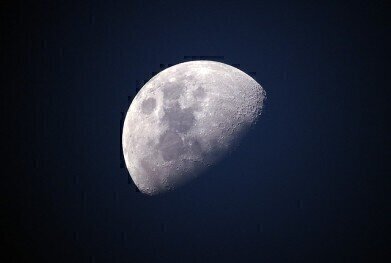Analytical Instrumentation
Is There Fuel on the Moon?
Apr 04 2019
50 years after Neil Armstrong first set foot on the moon, a joint venture from the European Space Agency (ESA) and ArianeGroup could see regolith ore mined from the celestial object and used to create sustainable rocket fuel.
The organisations recently signed a one-year contract outlining plans to launch a space mission and harvest regolith ore from the moon. According to ESA scientists the ore is rich in water and oxygen, two resources that could help sustain human life on the moon and support the construction of settlements. As well as harvesting life-sustaining resources, there are also plans to us the oxygen-rich regolith ore to manufacture rocket fuel that could be used to power exploratory missions into outer space and beyond.
Regolith ore could mark a new era for space exploration
German start-up PTScientists won the contract to build the lunar lander, while Belgian-based company Space Applications Services will manufacture communications technology and ground control facilities, as well as oversee service operations. According to ArianeGroup, unlocking the power of space resources could pioneer a new era of space travel.
“The use of space resources could be a key to sustainable lunar exploration and this study is part of ESA’s comprehensive plan to make Europe a partner in global exploration in the next decade,” says ArianeGroup CEO, André-Hubert Roussel.
Moon-harvested rocket fuel set to power interstellar EVs
Rocket fuel created on the moon could also be used to power new missions like Toyota's pressurized self-driving rover, which will be launched in collaboration with JAXA, a high-profile Japanese aerospace exploration agency. The next-generation rover will rely on Toyota's advanced fuel cell technology, which uses reactions between oxygen and compressed hydrogen to generate power. The state-of-the-art electric vehicle features 13 square metres of living space and astronomical lunar views, plus the scope to travel more than 10,000 kilometres across the surface of the moon.
"Manned, pressurized rovers will be an important element supporting human lunar exploration, which we envision will take place in the 2030s," asserts Koichi Wakata, JAXA Vice President. "We aim at launching such a rover into space in 2029."
Want to know more about the latest fuel cell developments unfolding on planet Earth? Introducing the automated LiqMix Cascade system from AlyTech, 'Method development for the analysis of C1-C5 hydrocarbons in fuel cell hydrogen with calibration gas generated from standard gas and liquids' explores how it can be used to perform multi-point calibrations, linearity and detection limit checks.
Digital Edition
PIN 25.1 Feb/March
March 2024
In This Edition Safety - The technology behind the ION Science Tiger XT - Safety with ammonia and LOHCs as hydrogen carriers Analytical Instrumentation - Discussion on new tribology te...
View all digital editions
Events
Apr 28 2024 Montreal, Quebec, Canada
Apr 30 2024 Birmingham, UK
May 03 2024 Seoul, South Korea
May 05 2024 Seville, Spain
May 06 2024 Riyadh, Saudi Arabia


















